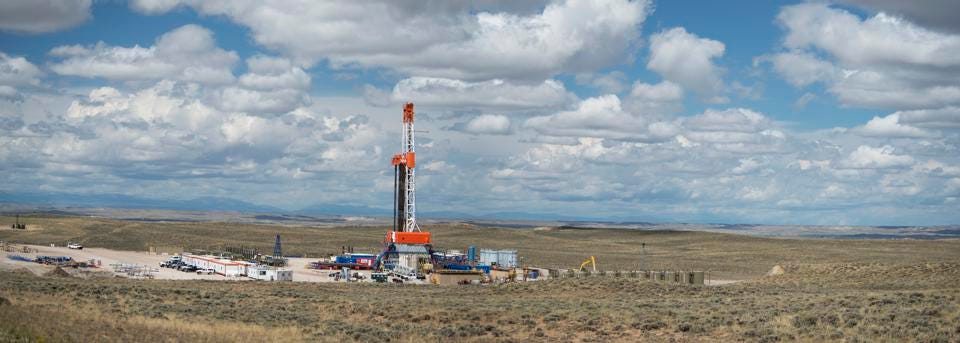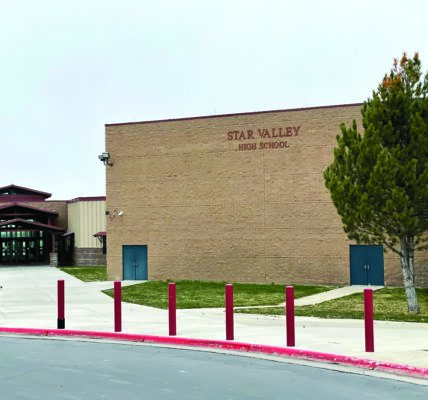
By Brady Oltmans
Sublette Examiner
Via- Wyoming News Exchange
PINEDALE — The U.S. Department of the Interior released its report on federal oil and gas leasing and permitting on Nov. 26, bringing an end to the process that prompted a pause on federal gas lease sales back in January. Wyoming elected officials greeted the report with antipathy.
That release mentioned a need for reform in the process in order to benefit the American taxpayer.
For example, the report said, the nation’s energy needs have developed to become more diverse while the oil and gas programs have remained largely unchanged. The report suggests those unchanged policies have direct and indirect impacts on federal land, water, wildlife and communities.
Among those impacts was to improve process and outreach to tribes, states and local governments.
What the report suggests is raising the royalty rate from 12.5 percent – the same as established in the Mineral Leasing Act in 1920 – which the report suggests is out of step with modern times.
“Numerous public reports provide support for raising royalty rates for leasing on public lands, and nearly all state and private lands require that operators pay a royalty rate higher than 12.5 percent,” it read. “In June 2017, GAO reported that studies showed that raising federal royalty rates for onshore oil and gas could ‘decrease production on federal lands by a small amount or not at all but could increase overall revenue.’”
On Wyoming state lands, oil and gas royalty rates are set at 16.67 percent. The federal land rate of 12.5 percent is generally the lowest among state, private and federal jurisdictions.
A Taxpayers for Common Sense report last year stated the federal government lost as much as $12.4 billion in revenue from oil and gas drilling on federal lands from 2010 through 2019 because the federal royalty rate was too low. Those findings coincided with results seen in Texas and Colorado, where no significant effect on production from state lands was seen after the state royalty rates were raised.
Wyoming elected officials blasted the report, releasing strongly worded statements and speaking passionately on Capitol Hill.
Gov. Mark Gordon said none of the options for reform offered by the report are smart or necessary for Wyoming.
“With our state’s oil and gas industry just showing signs of recovery, this is the worst time to needlessly increase expenses such as jacking up royalty rates or instituting higher bond requirements,” his statement read.
U.S. Sen. John Barrasso joined the governor’s sentiments in a statement he penned the same day the report was released. Barrasso disputed the findings of the studies citied in the report, saying an increase in royalty rates would directly lead to an increased burden on taxpayers.
“These higher costs will be passed on to consumers in the form of higher energy bills and prices at the pump,” he said. “Shutting down energy production on federal lands will not fix climate change.”
The leasing pause, while it was enacted, applied to only new lease sales.
The Wyoming Bureau of Land Management oversees 18 million acres of public lands – nearly 11 million of which were already leased for development as of 2020. Gordon said proposed changes could have come without a leasing pause, which his office previously said hurt Wyoming’s economy.
Active drill rig counts in Wyoming actually tripled to 15 during the leasing pause and, according to a WyoFile.com report, the Wyoming Oil and Gas Conservation Commission issued 1,984 drilling permits between late January and August – nearly double the amount issued during the same timeframe last year.
Figures provided by the Wyoming Oil and Gas Conservation Commission show the state’s gas production has steadily declined since its peak in 2009.
Of course, the 2020 product fell off dramatically because of the Covid-19 pandemic.
Sublette County has remained the top gas-producing county in Wyoming, by a large margin during that time. But production from Sublette County has dropped in that time.
Fewer producers are drilling in the county as active rig counts continue to recover from the initial weeks of the pandemic when there were no active rigs in Wyoming.
Sublette County has also experienced some movements outside of direct production in the past year.
UP Energy purchased Pinedale Energy Partners and rebranded itself as PureWest. Jonah Energy, along with several other production companies, asked Sublette County commissioners for an exemption from Senate File 60 that would have required monthly ad valorem payments.
Commissioners initially blocked that idea before learning the financial impacts, and then proceeded to grant those exemptions.
Sublette County itself was involved in litigation, along with other counties in Wyoming, against Vanguard Operating for outstanding tax payments dating back years. A settlement was ultimately reached and the county received about 33 percent of what it was seeking.
PureWest, formerly known as Ultra Petroleum, recently announced a six-month drilling plan that included more activity in Sublette County. A company spokesperson said the company aims to use local contractors as much as possible in those plans.
In Wyoming alone, there are 5 million acres of BLM leases undeveloped and not producing oil or gas. This existing stockpile of non-producing leases could offer 67 years of future drilling opportunity, according to a recent study conducted by Conservation Economics Institute.





